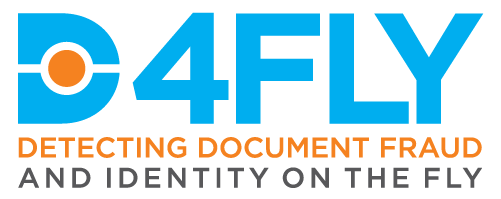
By Niko Lehto, Anni Karinsalo, Laura Salmela VTT, Finland.
26 February 2021
European research cooperation provides a comprehensive framework for the development and testing of emerging technologies in new application areas, including also law enforcement actors.Introducing technology-wise something new is never too easy, particularly in a highly regulated sector such as border control.
Regardless of any new innovative gadget or full-blown system, the technology needs to serve a clear purpose addressing a specific challenge to which end-users explicitly or implicitly seek solutions. In the D4FLY project, VTT Technical Research Centre of Finland explores practical solutions for utilizing blockchain technology in two different application contexts: 1) combination of digital identity and biometric solutions, and 2) verification of travel documents authenticity and detection of forged counterfeits.
Blockchain technology basics
The basic technological principles of blockchain bear a long history, although the concept itself is still relatively unknown to the general public. Bitcoin virtual money is probably the most known application of blockchains, but blockchains have also been used to verify digital signatures of documents, to certify the authenticity of valuable goods, and to guarantee the safety of medical supplies among others. Once overheated interest in the technology tempered down, blockchains have become one (and by no means the only) option for storing and sharing data from different systems.
What is a blockchain, and how does it work in reality?
A blockchain is a database in which information is stored in a distributed manner. In the case of blockchains, the information refers to transactions which can be in practice for example the registration of property rights in a cadastral system. Distribution or decentralization means that the information is copied to and remains identical across multiple storage locations on a network. Blockchains are inherently transparent, although the storage method itself may not be visible to the user in any way: anyone with legitimate access to the blockchain can view the contents of the blockchain and the changes made. Changes and additions to the blockchain are approved through a pre-determined consensus mechanism which depends on what technology has been used (i.e., what the technology allows) and how the authors of the application themselves have implemented it. A closely related concept to blockchains is smart contracts. Smart contracts are software which enact according to pre-agreed contractual terms and conditions and can operate with a high level of automation. They can be utilized in various contexts, e.g. in automated customs clearance and the supply of travel tickets, to name a few. In the travel industry, smart contracts could realize functions such as automated reimbursements in case of travel cancellation, or real-time added service offering on top of travel ticket.
Because blockchains are essentially decentralized systems, they enable trust-building without a centralized trustee. Those involved in the system do not have to rely on each party of the system individually, but on the consensus mechanism being properly designed and implemented. The consensus mechanism ensures that no single party can unwantedly change the stored transactions in the blockchain, or intentionally produce false entries in the blockchain.
Future outlook to digital identity and border control
Blockchain technology enables to combine novel biometric approaches, decentralized digital identity and border control environment strongly to each other. The advantage of this is the possibility to provide new kind of data and use cases to border control scheme in open and privacy preserving manner. The travellers are able to use official identifiers in interaction with public health organization, travel companies or generally any third party which are present in the system. The digital identity is designed in a user centric way and it fully respects the right to be forgotten. In a border control environment, this could be utilized for example in fit-to-travel with regard to corona test result or vaccine certificates. These technologies are already existing but not widely adopted, in D4FLY VTT aims to make these technologies more sound by exploiting how D4FLY solutions could adapt user centric decentralized digital identity.
Blockchains and document verification
The second use case focuses on the verification of the authenticity of travel documents and detection of forgeries by drawing advantage from blockchain technology. In D4FLY we are working on a prototype to enable a border guard to read and create passport history data related to the previous checks and authenticity of the passport.
In this case, a unique identifier for a travel document is stored in a blockchain. The used identifier is not a traditional passport number or personal identifier code, but it is calculated from the contents of the document by means of a cryptographic hash function. The identifier is used to represent the document and its content, but it is not possible to derive or calculate any individual part of the content (such as passport number or birth date) from the identifier. Blockchain contains a strong proof of which physical travel document has been verified, and of the methods that have been used in this verification.
Key steps ahead
To reach the most potential of our blockchain solutions in D4FLY project, our aim is to make blockchain technology better understood and solve technical challenges to adopt new technology. In addition, the aim is to upgrade these solutions especially according to the border authority input. The feedback from border authority is an important source for development directions, thus we plan to capture and analyse their perceived value of blockchain use during the D4FLY demonstration events notably in Ter Apel and Lithuania. The input has so far concerned improvements regarding the user interface, and the quality of information that should be handled in the blockchain.
